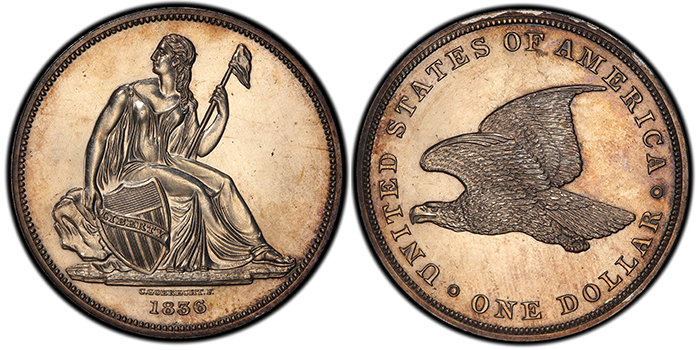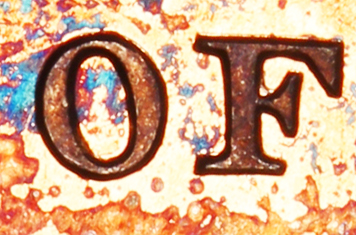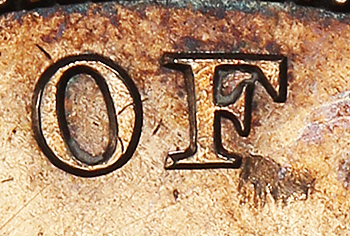J63 - Cabinet Coin Restrike
1836 Name Below Base, Starless Reverse, Plain Edge, Alignment III, Silver

J63 State B photo
Struck circa April 1869. Linderman’s term as Director is terminated in April of 1869. Auction records and emission sequence of the Cabinet Coin Restrikes strongly indicate that the copper and mule Cabinet Coins were struck just prior to Linderman leaving office.
Three pieces known in two die states:
 |
 |
| State A - No low spot right foot of F | State B - Low spot right foot of F |
State A - Korein/ANS (No photo, description from viewing by Dannreuther and Sholley).
Obverse: Light rusting in front of mouth and grainy from rust on neck, upper chest, and right arm. Rust patches behind hair at right shoulder, front of right fingers, on left hand, and on upper belly.
Reverse: Lightly grainy from rust, esp. on letters. ITED, MERI, LLAR cracks faint as with latest J84 restrikes and early J104 restrikes. Strong polishing spur from upper curve of D. No low spot at right foot of F. Die line from second dentil above T to upper left serif of E weak. Indistinct elongated lump over SO – as with all uses of this reverse, this lump is not indicative of die sates and may or may not be seen depending on polishing and strike.
State B - [PCGS 30774099]
Obverse: Possibly lightly polished to remove rust. The “orange peel” rippling seen on chest, face, and right arm of Liberty, and lightly out into surrounding fields likely caused by improperly annealed planchet, not seen on any other piece.
Reverse: Lightly grainy from rust, esp. on letters. ITED, MERI, LLAR cracks faint as with latest J84 restrikes and early J104 restrikes. Strong polishing spur from upper curve of D. Develops a strong, irregular, and ragged low spot with indentations at right foot of F from debris adhering to die (possibly from foreign material stuck to planchet which then became stuck to the die). Die line from second dentil above T to upper left serif of E weak. Indistinct elongated lump over SO – as with all uses of this reverse, this lump is not indicative of die states and may or may not be seen depending on polishing and strike.